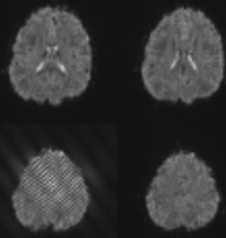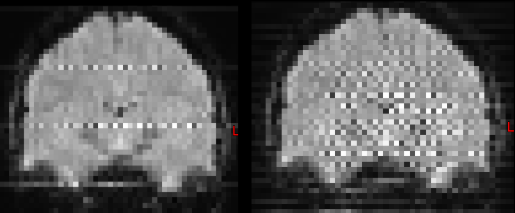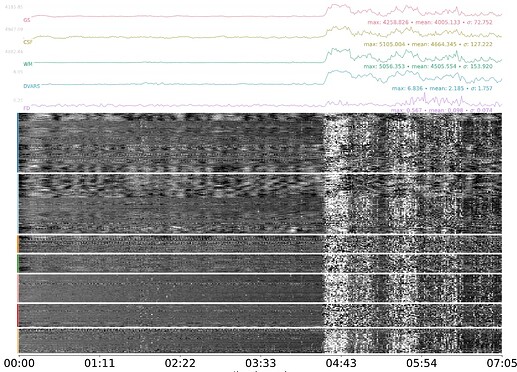Dear Community,
I recently encountered some artifacts in our data and could not attribute them to any specific source.
I’m collecting multi-band multi-echo data (described in this thread) with the following parameters: MB 4, GRAPPA 2, TR-1090 ms, 3.2 mm voxels, 7/8 partial Fourier, TE=13, 27.6, 42.2, 56.8, 71.4 ms. I have both phase and magnitude data.
For some of the subjects, but not all, I noticed very clear artifacts in the form of “warped checkerboard”. When they appear, they appear across several slices, raising the concern for a multi-band artifact. Here you can see the same 4 slices at different times points and echoes, each time with an artifact in a different slice:
Sometimes, a distinct spatial frequency is apparent:

The specific case you see here is especially confusing to me, as these relatively rare artifacts become extremely prevalent towards the end of the resting-state scan, as you can see in the fmriprep report (version 25.1.4):
On the left is an example coronal slice from early in the scan, and on the right from late in the scan:

These artifacts are not the result of any processing - they appear in the raw dicom files. Since we’re still collecting data from new participants, I’m worried that this might be some hardware issue we’re missing.
Any ideas on where to look for the root of the issue would be highly appreciated!
Roey
P.S.
I have not yet looked into potential tools like MARSS.

